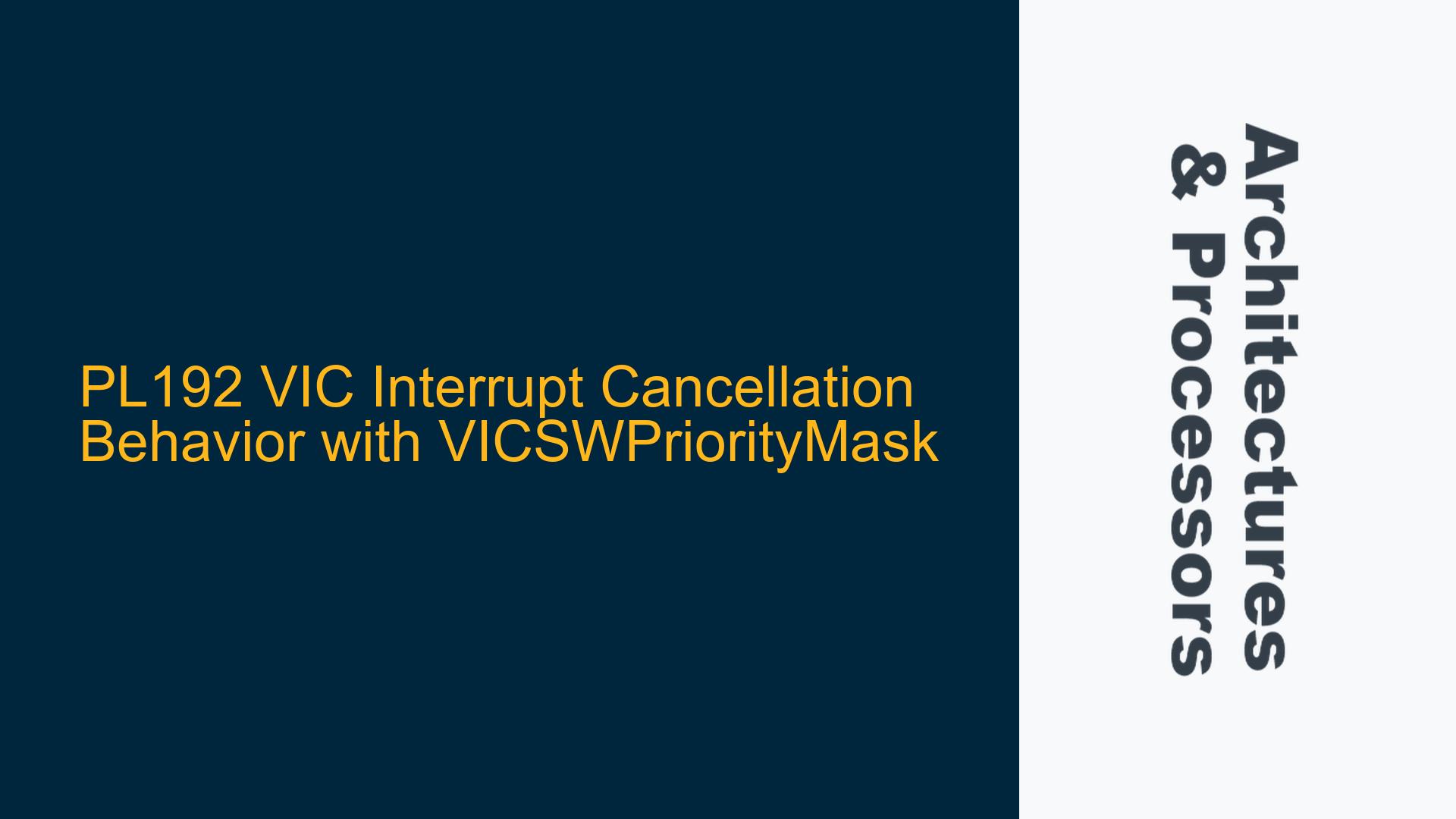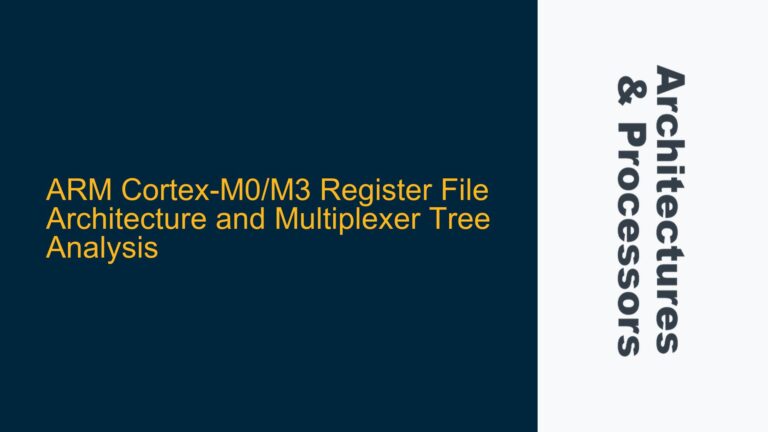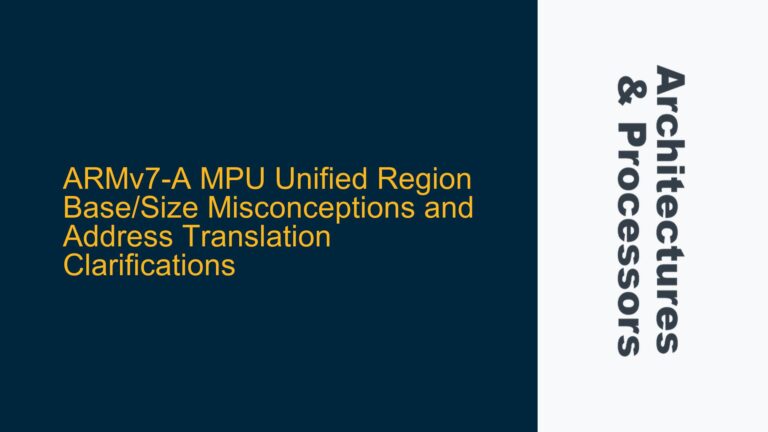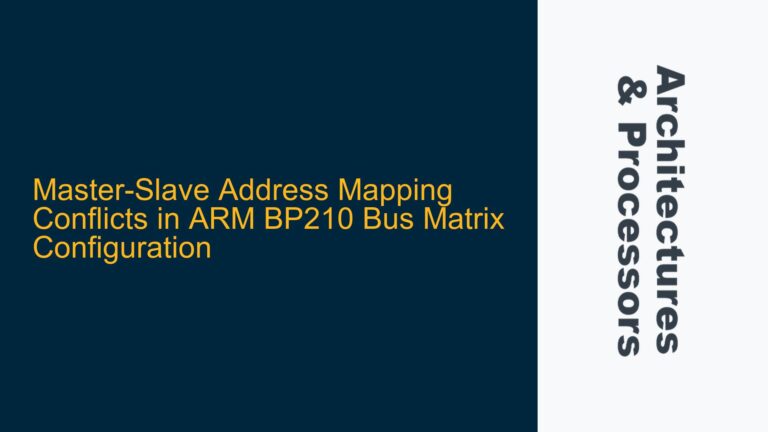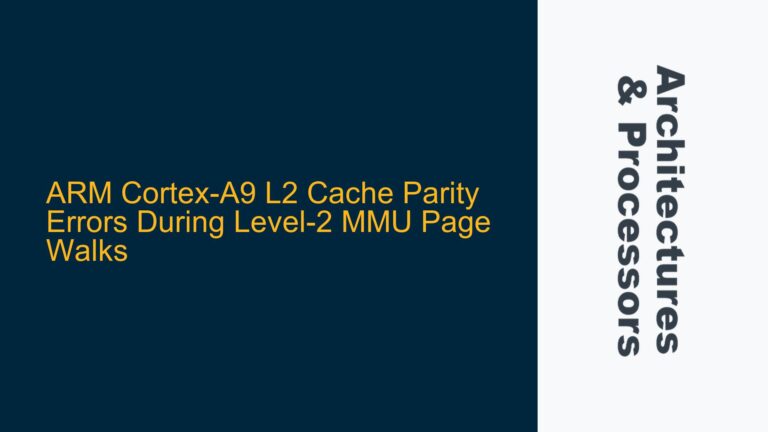ARM PL192 VIC Interrupt Handling and VICSWPriorityMask Interaction
The ARM PL192 Vectored Interrupt Controller (VIC) is a critical component in managing interrupt requests in ARM-based systems. One of the key features of the PL192 VIC is its ability to prioritize and mask interrupts using the VICSWPriorityMask register. However, the behavior of the PL192 VIC when an interrupt is asserted but not yet acknowledged by the CPU, and subsequently masked by the VICSWPriorityMask, is a nuanced topic that requires a deep understanding of the hardware-software interaction.
When an interrupt is asserted to the PL192 VIC, the VIC asserts the nIRQ signal to the CPU. The CPU is expected to acknowledge the interrupt by reading the VICADDR register, which provides the address of the interrupt service routine (ISR). However, if the VICSWPriorityMask bit is set to mask the interrupt before the CPU acknowledges it, the behavior of the PL192 VIC becomes less straightforward. Specifically, the question arises: will the PL192 VIC cancel the interrupt and deassert the nIRQ signal if the interrupt is masked by the VICSWPriorityMask before the CPU acknowledges it?
This issue is further complicated by a second scenario: if the interrupt source is cleared before the VIC is acknowledged by the CPU, will the PL192 VIC cancel the interrupt and deassert the nIRQ signal? Understanding these behaviors is crucial for designing reliable interrupt handling mechanisms in ARM-based systems.
VICSWPriorityMask Timing and Interrupt Source Clearing Scenarios
The behavior of the PL192 VIC in the context of the VICSWPriorityMask and interrupt source clearing can be attributed to several underlying causes. These causes are rooted in the timing of interrupt masking, the state of the interrupt source, and the interaction between the VIC and the CPU.
One possible cause of the observed behavior is the timing of the VICSWPriorityMask operation relative to the interrupt acknowledgment by the CPU. The PL192 VIC operates based on a priority mechanism, where interrupts are serviced according to their priority level. The VICSWPriorityMask register allows software to dynamically adjust the priority mask, effectively enabling or disabling specific interrupt sources. If the VICSWPriorityMask is set to mask an interrupt after the interrupt has been asserted but before the CPU acknowledges it, the PL192 VIC may or may not cancel the interrupt depending on the internal state of the VIC.
Another potential cause is the state of the interrupt source itself. If the interrupt source is cleared before the VIC is acknowledged by the CPU, the PL192 VIC may interpret this as a cancellation of the interrupt request. This behavior is influenced by the design of the PL192 VIC, which continuously monitors the state of the interrupt sources. If an interrupt source is deasserted before the VICADDR register is read, the PL192 VIC may deassert the nIRQ signal, effectively canceling the interrupt.
Additionally, the interaction between the PL192 VIC and the CPU plays a significant role in determining the outcome. The CPU’s response time to the nIRQ signal, the latency in reading the VICADDR register, and the timing of the VICSWPriorityMask operation all contribute to the overall behavior. These factors must be carefully considered when analyzing the PL192 VIC’s response to masked or cleared interrupts.
Implementing Proper Interrupt Handling with PL192 VIC and VICSWPriorityMask
To address the issues related to the PL192 VIC’s behavior when interrupts are masked or cleared, a systematic approach to troubleshooting and implementing solutions is necessary. This involves understanding the timing constraints, ensuring proper synchronization between the VIC and the CPU, and implementing best practices for interrupt handling.
First, it is essential to ensure that the VICSWPriorityMask is set at the appropriate time relative to the interrupt acknowledgment by the CPU. This requires careful consideration of the software flow and the timing of interrupt masking operations. One approach is to use memory barriers or synchronization primitives to ensure that the VICSWPriorityMask is set before the interrupt is acknowledged by the CPU. This can prevent race conditions where the interrupt is masked after it has been asserted but before it is acknowledged.
Second, the state of the interrupt source must be carefully managed. If the interrupt source is cleared before the VIC is acknowledged, the PL192 VIC may deassert the nIRQ signal, canceling the interrupt. To avoid this, the software should ensure that the interrupt source remains asserted until the VICADDR register is read. This can be achieved by implementing appropriate delay mechanisms or by using hardware features that prevent the interrupt source from being cleared prematurely.
Third, the interaction between the PL192 VIC and the CPU must be optimized to minimize latency and ensure timely acknowledgment of interrupts. This involves tuning the CPU’s interrupt response time, optimizing the software ISR, and ensuring that the VICADDR register is read as quickly as possible after the nIRQ signal is asserted. Additionally, the use of interrupt prioritization and nesting can help manage multiple interrupt sources efficiently, reducing the likelihood of missed or canceled interrupts.
Finally, it is important to validate the behavior of the PL192 VIC in the specific system context. This can be done through rigorous testing and simulation, using tools such as logic analyzers and debuggers to monitor the nIRQ signal, the VICADDR register, and the state of the interrupt sources. By carefully analyzing the timing and behavior of the PL192 VIC, it is possible to identify and address any issues related to interrupt masking and cancellation.
In conclusion, the behavior of the PL192 VIC when interrupts are masked or cleared is influenced by a combination of timing, state management, and CPU-VIC interaction. By understanding these factors and implementing appropriate solutions, it is possible to ensure reliable and efficient interrupt handling in ARM-based systems.
